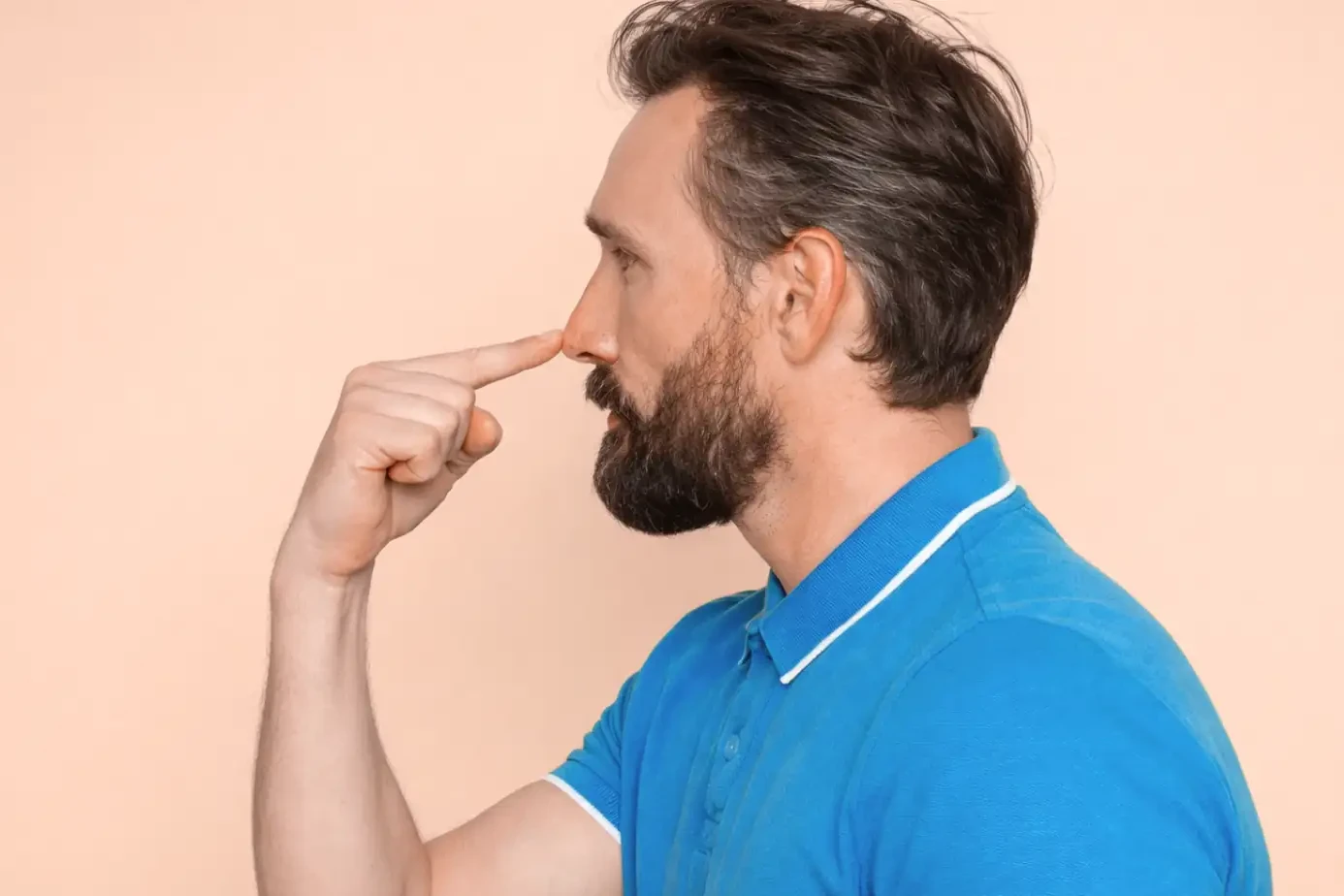Do you have mysterious muscle weakness and feel tired all the time? You might be curious about polymyositis. It’s a disease that causes your muscles to get inflamed and weak. Polymyositis belongs to a group of diseases called inflammatory myopathies.
This disease usually hits people in their 30s to 50s, more often women than men. It’s not common in those under 18, affecting people from 31 to 60 mostly. The symptoms like muscle weakness come on slowly, over weeks or months. So, it’s key to recognize them early and get help.
Polymyositis can really make life tough. It weakens your muscles more and more, which can affect simple things like eating, talking, or walking up stairs. Some folks with polymyositis also face other health issues like arthritis or heart problems. And here’s a twist – it can be linked to conditions like lupus. This happens when your immune system mistakenly attacks your own body.
Gaining knowledge about polymyositis, its signs, and treatment choices is vital. This helps manage this rare but serious muscle disease. Working with your healthcare team means you can make a plan that suits you. This could better your life quality.
Table of Contents
ToggleWhat is Polymyositis?
Definition and Overview
Polymyositis is a rare disease that leads to muscle weakness. It affects both sides of your body. You might find it hard to do simple daily activities.
This disease targets the muscles near your body’s trunk. These include hips, thighs, shoulders, upper arms, and neck. The weakness starts on both sides of the body and gets worse slowly over time.
Symptoms of Polymyositis
Common symptoms include muscle pain and stiffness. You may feel weak in your abdomen, shoulders, upper arms, and hips. Joint pain and trouble breathing are also signs.
People with this disease might have problems swallowing. In severe cases, the heart muscle can get inflamed, causing irregular heartbeats.
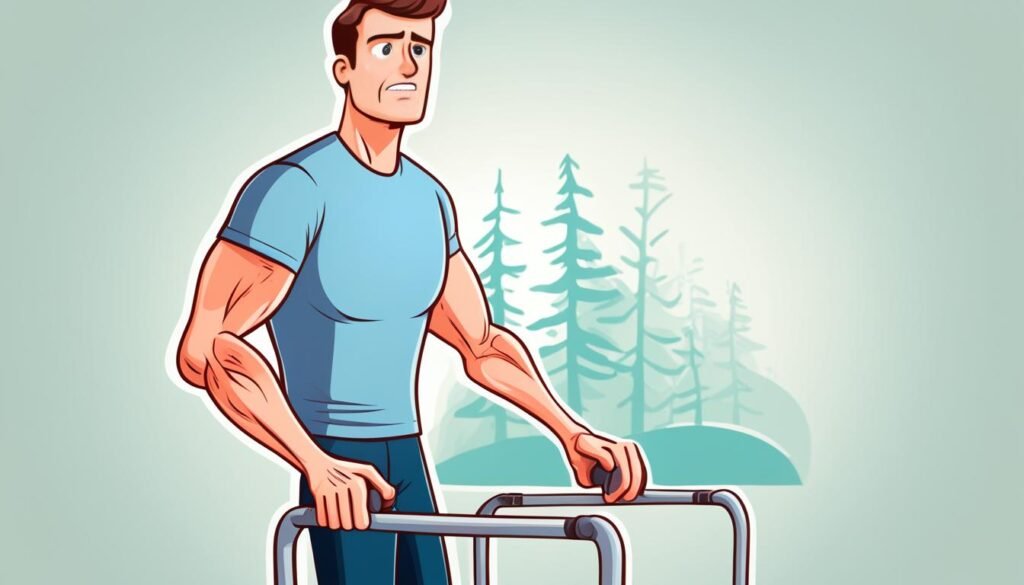
Causes of Polymyositis
The exact cause of polymyositis is a puzzle. It’s linked to autoimmune disorders. In these conditions, the immune system attacks the body by mistake. Polymyositis does the same, harming muscle fibers.
It’s rare, but some medicines can cause an allergic reaction. This reaction might harm your muscles. Yet, most of the time, doctors and experts can’t find a specific trigger for polymyositis. The mystery of the causes of polymyositis is a big focus in today’s research. We’re trying to uncover the factors that lead to this inflammatory disease.

Although we don’t know the exact causes of polymyositis, recognizing the risk factors can help. It’s key to notice any muscle or health changes early. Then, work closely with your healthcare team. This can make managing polymyositis more efficient.
Risk Factors for Polymyositis
Polymyositis is linked to several risk factors. Knowing them helps with early spotting and proper control. This can be really important for managing the condition well.
Age and Gender
In most cases, it hits adults in their 30s, 40s, or 50s. Women get this disease more than men. It’s rare, but children can also be affected, although that’s not usual.
Autoimmune Disorders
Having certain autoimmune disorders raises the chances of getting polymyositis. Conditions like lupus, rheumatoid arthritis, scleroderma, or Sjögren’s syndrome can make the immune system attack the muscles mistakenly.
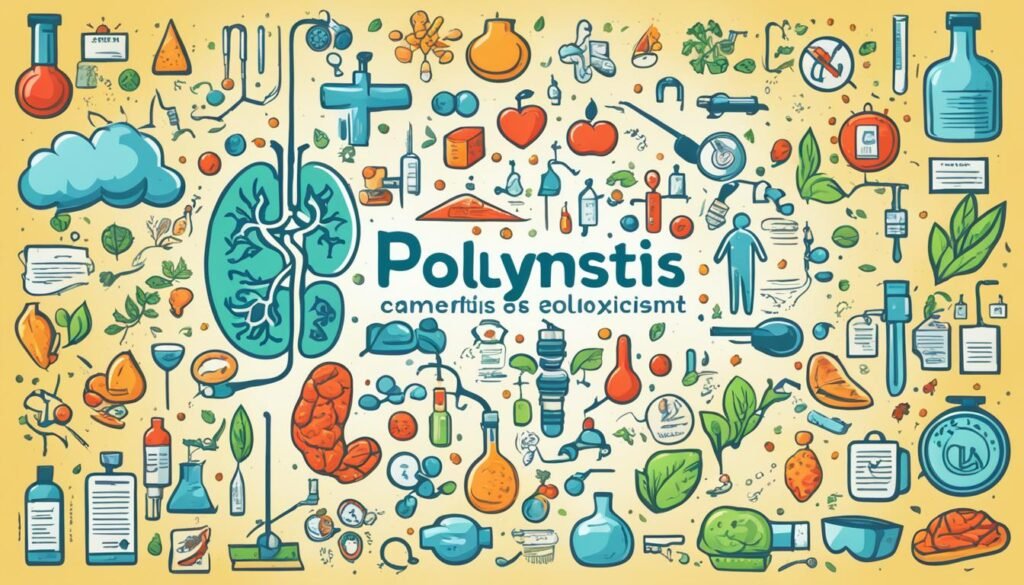
Diagnosing Polymyositis
Getting a diagnosis of polymyositis involves your doctor looking at many things. They start with a detailed physical examination. This exam checks your muscle strength and any symptoms you might have.
Physical Examination
During the exam, your doctor looks closely at your muscles and joints. They check how well you can move and if your muscles feel weak or sore. Your doctor might watch you stand up or see if you can lift your arms high.
Blood Tests
Blood tests play a big part in diagnosing polymyositis. The tests look for high amounts of certain enzymes that show muscle damage. Doctors also search for autoantibodies linked to polymyositis and other similar illnesses.
Electromyography (EMG)
An electromyogram (EMG) measures the electric activity in your muscles. This test helps confirm if you have a muscle problem. It also tells if it’s polymyositis or something else.
Muscle Biopsy
Sometimes, a muscle biopsy might be needed. This means taking a small bit of muscle to look at under a microscope. It can show the type and how bad the muscle damage is from polymyositis.
Your doctor puts all the test results together to make a solid polymyositis diagnosis. With this, they create a treatment plan made just for you.
Treatment Options for Polymyositis
If you have polymyositis, there are many treatments available. These can help you feel better and make your muscles stronger. There’s no cure yet, but these treatments really help.
Anti-inflammatory Medications
Doctors often use anti-inflammatory drugs for polymyositis. These include corticosteroids. Prednisone, a common type, works to calm inflammation and boost muscle power. You might start seeing improvements in 4 to 6 weeks. These polymyositis medications are good for handling early symptoms.
Immunosuppressive Drugs
Your doctor might also recommend drugs to lower your immune system’s activity. Medicines like azathioprine and methotrexate are used with corticosteroids. This gives a strong polymyositis treatment plan.
Physical Therapy
Polymyositis physical therapy is vital. It includes exercises to stretch and strengthen your muscles. This helps keep your muscles working and stops them from getting too weak. Your therapist will create a plan just for you. It’s meant to get you back to your best in muscle strength and movement.
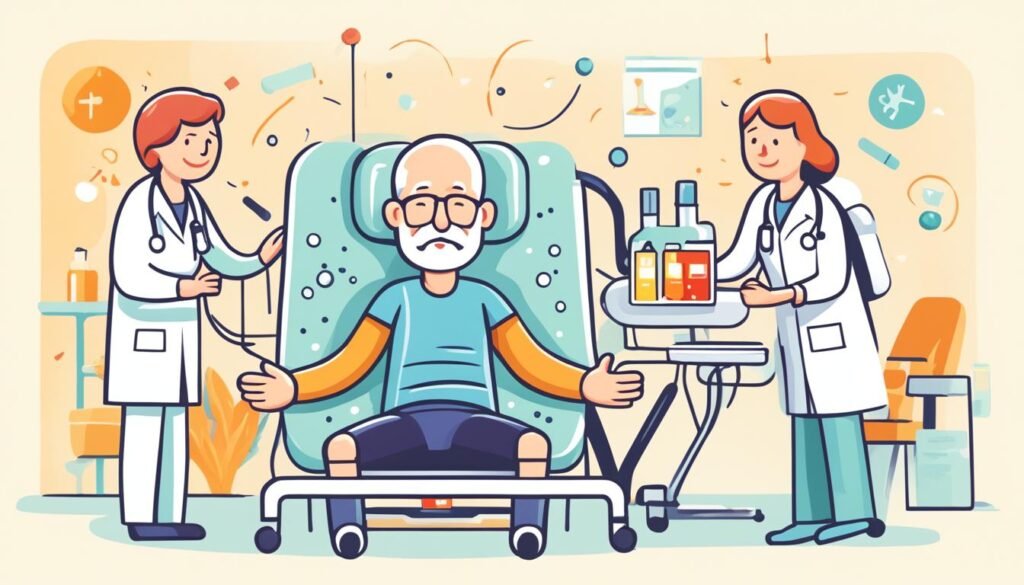
Complications of Polymyositis
If not managed well, polymyositis can create serious health issues. This disease can weaken muscles used for swallowing. This weakness might cause issues with eating and lead to malnutrition. Problems with breathing, like difficulty or failure to breathe, can also happen.
The illness can make the heart’s muscle inflamed, a condition called myocarditis. This can cause the heart not to pump blood well, known as congestive heart failure. It can also lead to heart rhythm problems.
Swallowing Difficulties
Polymyositis weakens the muscles that help you swallow. This can result in choking and coughing. In some cases, food or liquid might go into your lungs, causing pneumonia. It’s important to manage polymyositis well to avoid these issues.
Breathing Problems
The disease can also affect your breathing muscles. You may find it hard to breathe deeply. And in severe cases, you might face breathing failure. It’s critical to regularly check and treat your polymyositis to prevent these problems.
Cardiovascular Complications
Polymyositis can lead to heart muscle inflammation, or myocarditis. This condition can cause severe problems like heart failure and irregular heartbeats. Quick and proper care is vital to avoid serious heart issues.
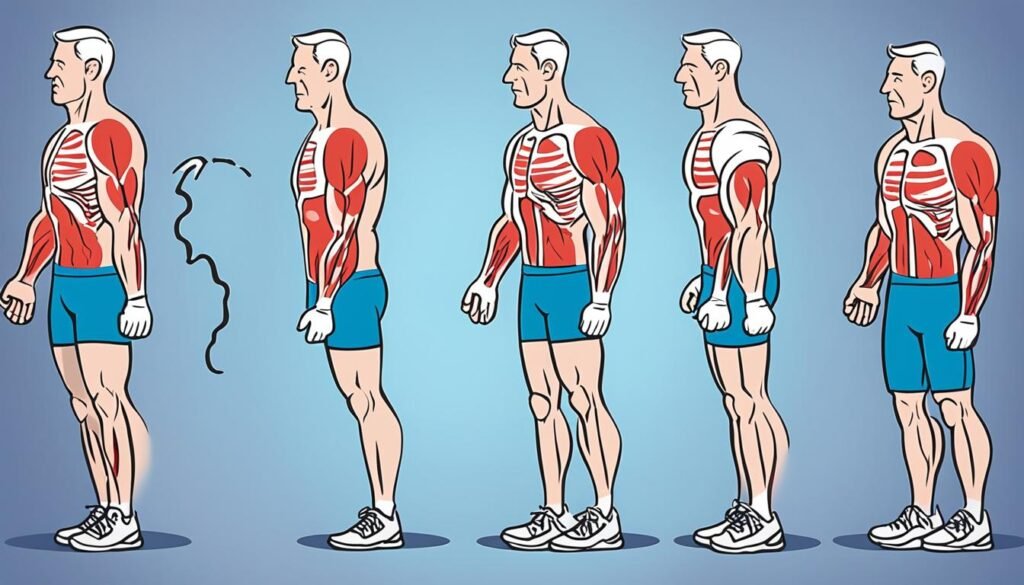
Associated Conditions with Polymyositis
Polymyositis is a rare disease that affects the muscles. But, it often comes with other problems too. Some common issues are Raynaud’s phenomenon, connective tissue diseases, and problems with the lungs.
Raynaud’s Phenomenon
Raynaud’s makes your fingers and toes change color in the cold. This is because the blood vessels there get too narrow. People with polymyositis often have this. It can cause bad blood flow and damage to tissues.
Connective Tissue Diseases
Polymyositis might come along with diseases like lupus or rheumatoid arthritis. These conditions can hurt the muscles, joints, and organs. It’s important to treat both polymyositis and the other disease to stay healthy.
Interstitial Lung Disease
Sometimes, polymyositis also affects the lungs. This can make it hard to breathe. It makes managing the muscle disease even harder. People with polymyositis need careful checks and treatments for their lungs too.

Living with Polymyositis
Adjusting to life with polymyositis is challenging, but you can manage it well with the right approach. You might need to change how you live to deal with muscle weakness and tiredness. These changes can help keep your life quality high and your independence strong.
Lifestyle Adjustments
Tackling living with polymyositis means adjusting your daily tasks to save on energy and limit stress to your muscles. Try spreading tasks out during the day and break them into small steps. Using tools like canes, walkers, or scooters can also be very helpful. They can make moving easier and less tiring. Also, don’t forget about physical therapy. It can keep your muscles strong and flexible. This way, you can keep doing the things you love.
Support Groups
Finding others who understand living with polymyositis can be a huge help. A polymyositis support group, whether in-person or online, can offer both practical and emotional support. It’s a place where you can share your story, get advice, and learn how to cope with the condition’s challenges. These groups are an essential lifeline as you face the difficulties and joys of living with polymyositis.
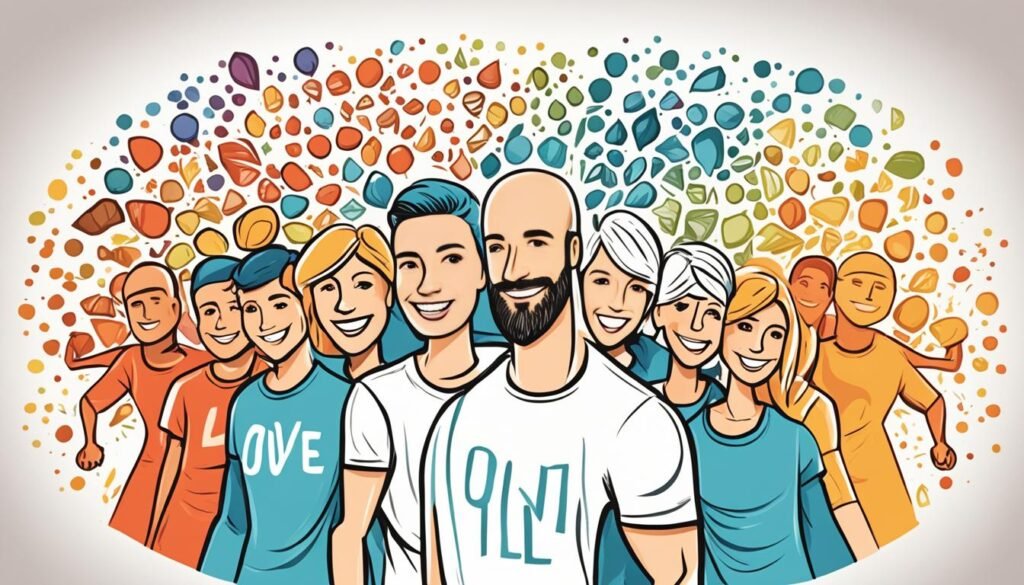
Prognosis and Life Expectancy
Polymyositis has no known cure, but treatment can boost muscle strength and function. The outlook and life expectancy for polymyositis patients vary. It depends on how severe the illness is, the response to treatment, and if complications arise. Many who have polymyositis lead good lives with the right care. However, the disease can worsen and become life-threatening in some instances.
The chance of dying from polymyositis or dermatomyositis varies from 4% to 45%. However, long-term outcomes can be positive from 18% to 90%. Factors like being older, being male, having trouble swallowing, a long time with symptoms before treatment, and the type of myositis play a role. So do issues involving the lungs or heart, and certain autoantibodies. About 10% of patients die from diseases linked to myositis, such as cancer, and lung problems.
After about 5 years, 20% of people stayed in remission without drugs. 80% saw their disease continue, either in cycles or constantly. At follow-up, 65% had their strength back, 34% dealt with little to no disability, and 16% felt completely normal physically. Older age seemed linked to muscle weakness, while being male was tied to disability.
With accurate management, patients with polymyositis can enjoy a good life. But in some cases, the disease can progress and bring serious risks. Knowing about the outlook and life expectancy for polymyositis is key. It helps both patients and their healthcare team plan and deal with the condition effectively.
Polymyositis in Children
Adults usually get polymyositis, but kids can get it too. Childhood polymyositis is rare and similar to the adult form. Symptoms include muscle weakness and inflammation.
Getting polymyositis in childhood is not common, with only about 0.5 to 8.4 cases per 100,000 in the USA. This disease makes up 2-8% of Juvenile Idiopathic Inflammatory Myopathies (JIIMs). Juvenile Dermatomyositis (JDM) is the most frequent kind, with around 80% of cases.
There have been only a few reports of children with polymyositis having body swelling as a symptom. One case involved a 13-year-old who tested positive for Antinuclear Antibody (ANA) and had high creatinine kinase levels. Her lab tests also showed anemia, positive ANA, and high creatinine kinase.
Doctors treated her with IV methylprednisolone and then switched to oral prednisolone. She got better. However, she also got pneumonia, likely because she had trouble swallowing. She was treated with antibiotics for the pneumonia.
In young patients with polymyositis, sometimes they first show signs of body swelling. But, symptoms like trouble swallowing (dysphagia) are not often linked to this disease. The cause of swelling due to polymyositis is still not clear. Yet, it’s thought that autoantibodies might be a key part.
Research and Clinical Trials
The National Institute of Arthritis and Musculoskeletal and Skin Diseases (NIAMS) leads muscle disease research like polymyositis at the National Institutes of Health (NIH). Clinical trials help us learn more and find better treatments for polymyositis. People with polymyositis should think about joining research studies.
These trials are key to understanding polymyositis better and making care better. They need people of all kinds to join, whether you’re healthy or dealing with an illness. This is so researchers and doctors can find out more about polymyositis.
Joining in research and clinical trials for polymyositis is important. It helps improve how we treat this unique muscle disease. Your part can aid in finding new treatments for others with polymyositis, enhancing their life quality.
Prevention of Polymyositis
There’s no sure way to prevent polymyositis since its cause is mostly a mystery. But, you can do a few things to lower your risk or avoid future flare-ups.
Some medicines might lead to developing polymyositis. If you think this is true for you, talk to your doctor. They can help you find and stop any meds that could be causing harm. Remember, never stop your treatment without your doctor’s advice.
Living healthily is key. If you have autoimmune illnesses, managing them well can help. Also, keep checking your muscle strength and how you feel. This helps catch any problems early. Always seek medical help if you feel worse or see any new symptoms.
It’s hard to completely prevent polymyositis, but teaming up with your healthcare providers is vital. They can guide you in managing the condition and keep your life quality high. Nothing is more important than your health, so always push for the best care.
Conclusion
Polymyositis is a rare and complex disease that affects the muscles. It can change how someone lives their life. Even though there is no cure, research and new treatments make it easier to manage polymyositis. Knowing about the symptoms, causes, and treatments helps you and your healthcare team create a plan. This plan can help you feel better and improve your life.
The number of people with polymyositis in the USA is between 0.5 and 8.4 cases per 100,000. It usually happens after 20 years old and is rare in children. Women are more likely to get it than men. Plus, it’s seen more in Black people than White people.
The future looks bright for beating polymyositis. More studies and trials are happening to learn and find new treatments. By being involved and staying up to date, you can play a big part in your own care. This helps improve how you live with polymyositis.
FAQ
What is polymyositis?
Polymyositis is a rare disease that makes your muscles weak and tired. It’s part of a group of illnesses that cause ongoing muscle problems. It can make the muscles hurt, get weak, and cause pain in some cases.
What are the symptoms of polymyositis?
People with polymyositis might feel pain and stiffness in their muscles. They might find that their muscles are weaker than usual, especially in the stomach, shoulders, arms, and hips. Other common signs are joint pain, difficulty breathing, troubles with swallowing, and an irregular heartbeat if the heart muscle is affected.
What causes polymyositis?
The true cause of polymyositis is not known. But, it acts a lot like diseases where the immune system attacks itself. Sometimes, a drug can start this problem, but we usually don’t know what causes it.
Who is at risk of developing polymyositis?
It mostly affects adults in their 30s to 50s, and more women get it than men. People with certain immune system diseases, like lupus or rheumatoid arthritis, have a higher chance to get polymyositis.
How is polymyositis diagnosed?
Doctors start by checking your history and doing a physical exam to see if your muscles are weak. They will also do blood tests to look for inflammation and certain markers. Other tests might include an EMG to look for muscle problems and a muscle biopsy to study tissue under a microscope.
How is polymyositis treated?
Unfortunately, there’s no cure, but symptoms can be treated. Medicines like corticosteroids are used to calm inflammation and boost muscle strength. Immunosuppressive drugs might be used as well. Physical therapy is also very important to keep your muscles as healthy as possible.
What are the complications of polymyositis?
If not treated well, it can cause serious issues. For example, it can make swallowing and breathing hard. It might also affect your heart, leading to heart problems like a weak heart or irregular heartbeats.
What other conditions are associated with polymyositis?
Polymyositis might come with other problems, like Raynaud’s, which makes your fingers and toes pale when it’s cold. It’s linked to other immune diseases and lung diseases that can scar the lungs.
How can I manage my day-to-day life with polymyositis?
You may need to change how you do things day-to-day to deal with the muscle weakness and tiredness. Joining a support group can help by providing emotional and practical support from people who are going through similar challenges.
What is the prognosis and life expectancy for individuals with polymyositis?
The outlook and how long people live with polymyositis varies. With the right care, many people keep a good quality of life. But in some cases, it can be very serious or life-threatening.
Can children develop polymyositis?
Yes, children can get it too, although it’s rare. It looks similar to the adult version, with muscle weakness and inflammation. Diagnosing and treating it in kids requires special attention to their growth and development.
How can I get involved in research and clinical trials for polymyositis?
The National Institute of Arthritis and Musculoskeletal and Skin Diseases (NIAMS) funds a lot of the research on diseases like polymyositis. Clinical trials help us learn more and offer new treatments. Being part of a study can help the whole field move forward.
Is there a way to prevent polymyositis?
Unfortunately, we don’t know how to stop it yet. But, if a certain medicine caused it, stopping that drug might prevent it from happening again. Always talk to your doctor before you stop any medication.
Source Links
- https://www.mayoclinic.org/diseases-conditions/polymyositis/symptoms-causes/syc-20353208
- https://www.hopkinsmedicine.org/health/conditions-and-diseases/polymyositis
- https://www.ninds.nih.gov/health-information/disorders/polymyositis
- https://www.webmd.com/arthritis/polymyositis
- https://www.mayoclinic.org/diseases-conditions/polymyositis/diagnosis-treatment/drc-20353212
- https://www.ncbi.nlm.nih.gov/books/NBK563129/
- https://www.ncbi.nlm.nih.gov/pmc/articles/PMC1798355/
- https://www.ncbi.nlm.nih.gov/pmc/articles/PMC9890880/
About The Author

This article is medically reviewed by Dr. Chandril Chugh, Board-Certified Neurologist, providing expert insights and reliable health information.
Dr. Chandril Chugh is a U.S.-trained neurologist with over a decade of experience. Known for his compassionate care, he specializes in treating neurological conditions such as migraines, epilepsy, and Parkinson’s disease. Dr. Chugh is highly regarded for his patient-centered approach and dedication to providing personalized care.
→ Book a consultation to discover which remedies suit your needs best.


